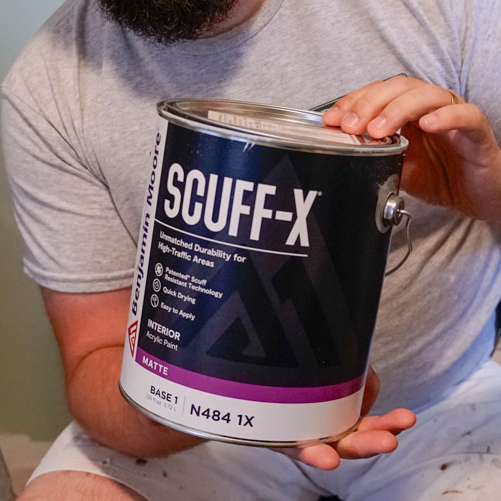VOC Levels in Paint: What Does It Mean?
VOC levels in paint: what does it mean? You may have heard the terms “zero-VOC paint,” “low-VOC paint,” and “high-VOC paint” and wondered what the term means. Franklin Painting of Farmington, CT, would like to explain a little about VOCs and how they can affect the experience of painting your home.
 VOC Levels in Paint! VOC = Volatile Organic Compounds
VOC Levels in Paint! VOC = Volatile Organic Compounds
Volatile organic compounds in paints release chemical fumes as the paint dries and after it has dried. Oil-based paint, which was the standard type of paint for many years, contains high VOC levels.
The many formulas of water-based latex paints that are popular today contain much lower levels of VOCs.
The Trouble With High-VOC Paints
Have you ever felt dizzy or headachey when painting with oil-based paints? That is because of the volatile organic compounds. Every paint manufacturer and health agency will tell you to make sure your workspace is well-ventilated when using these high-fume paints.
While paints with high VOC levels tend to dry faster, many people today want to avoid the health risks and don’t mind waiting a little longer for their paint to dry.
High-VOC paints emit toxic compounds through “off-gassing.” With some paint formulas, off-gassing can happen for several days after the paint has been applied. By comparison, latex paints with low VOC levels off-gas for shorter times.
Many high-VOC paints, including a lot of enamel varieties, give off odors ranging from sweet and fruity to pungent. But the strength of the odor does not tell you exactly how toxic the fumes might be. This is why you should pay attention to paint labels to determine the volatile organic compound level.
Benefits Of Zero-VOC Paints
From a health perspective, zero-VOC paints are the way to go. You can work with them and around them and never have to worry about weird side effects.
Benefits of using paint with minimal VOC counts include:
- It reduces carbon footprint
- More breathable air in the work areas and adjacent areas
- Lower air pollution
- It has a less negative effect on groundwater and other parts of the ecosystem
Easy Cleanup With Zero-VOC And Low-VOC Paints
Another benefit that painters particularly like with most water-based latex paints is the ease of cleanup. If you’ve ever used oil-based paints for a large job, you know the time, effort and hassle involved in washing out the brushes, rollers, and paint holders.
Not to mention cleaning up the spills. Oil-based paint adheres quickly to any surface and is virtually impossible to get out of fabrics with normal cleaning procedures.
Low-VOC latex paints are easy to clean away as long as you begin cleaning before they’ve had a chance to dry.
When You Must Use Oil-based Paint
Some paint jobs require sturdier paint, and oil-based paint is about as sturdy as you can get. Certain woods and metals, surfaces in high-moisture areas, and surfaces that will be getting a lot of foot traffic are ideal for high-VOC oil-based paints.
When you use these paints, wear a protective mask and make sure the workspace is well ventilated by a fan and open windows. Never use this kind of paint in closed spaces without airway protection.
 Your Next Painting Job
Your Next Painting Job
Franklin Painting uses many varieties of zero-VOC and low-VOC paints, and we also use oil-based paints when required. But we always protect ourselves, our customers and the environment, no matter what kind of paint we use.
If you want a professional paint job with startling results, we’re here to help with all types of interior and exterior painting projects. Reach us by phone or use our simple contact form.








